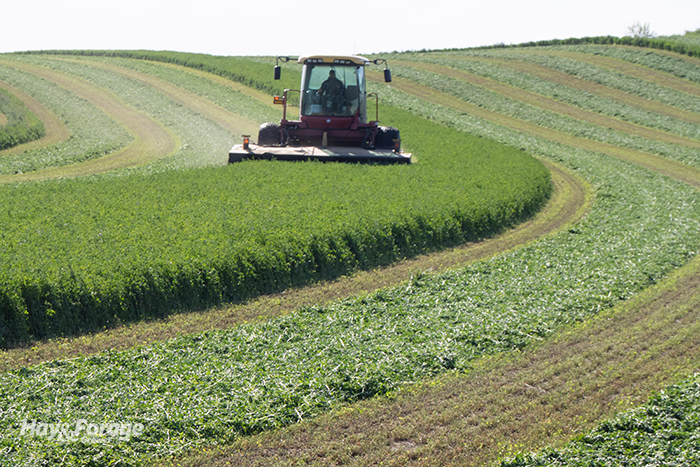
As the story goes, David Mulligan hit a poor drive off the first tee at a Montreal golf course. The errant shot may or may not have been the result of an extremely bumpy ride while traveling to the morning’s golf outing. Nevertheless, the Canadian amateur golfer reteed and took another swing. He told his golf partners that he was taking a “correction shot,” which would soon be termed a “mulligan” after its instigator.
Although mulligans are normally associated with golf, they can be invoked over a wide span of activities. We’ve all taken them in some form or another. One place they can’t be taken is when cutting hay. Once hay is cut, it can’t be uncut. On the flip side, if you decide not to cut at a given point in time, you can’t go back days later and cut. Just as there’s no crying in baseball, there are no mulligans in haymaking.
Not hitting your mark in making a cutting decision will always have consequences, but none of them will hurt as much as an ill-timed first cutting. For this reason, frequent monitoring of the growth and quality of an alfalfa or grass field during its initial spring growth cycle is not just a suggestion — it’s mandatory.
The range of environmental conditions experienced during the spring makes it difficult to gauge forage quality. Calendar dates are useless, as is the phenotypic maturity stage. It might sound crazy, but the relative forage quality (RFQ) of an alfalfa crop can be as much as 100 points different from year to year on the same date. The same can be said for forage quality at a given maturity stage.
But how can this be possible?
It’s thanks to Mother Nature, who calls all of the forage quality shots during the spring growth cycle. Hot and wet weather brings much different results than cool and dry weather over an extended period. Further, environmental conditions change from day to day more in the spring than at any other point in the growing season. This explains the ever-changing nature of first-cut forage quality and yield. It also explains why it’s more important to pay attention and monitor forage quality in the spring compared to any other cutting.
First-cut fiber digestibility can be — and usually is — the best of the season; those mostly cool days and nights are the haymaker’s friend. Once warm to hot weather sets in, or if wet weather delays the harvest, fiber digestibility can quickly move from the best to the worst of the year. This is true for pure alfalfa stands and even truer for grass stands.
The rate of fiber digestibility decline during late spring is unmatched by any other time of year. This means that the harvest window is usually smaller for first cutting, unless extended cool weather prevails. This is also why HarvXtra-traited genetics, which contain a lower lignin content, help to soften the blow of a delayed or mismanaged alfalfa cutting.
Yield or quality?
No cutting of alfalfa or grass offers the opportunity for high yields more than the first. In fact, it easily comprises the highest percentage of total-season yield compared to subsequent harvests.
Just as forage quality changes both between years and within a given year, so does yield change more dramatically than any other cutting. Estimates are that alfalfa packs on 100 to 150 pounds of dry matter per acre per day during the late-vegetative to late-bud stages. In five days, dry matter yield jumps 1/4 to over 1/3 ton per acre. The yield-quality tradeoff is never so in play as it is with first cutting.
First cutting is the only one of the growing season when there is no number of days since the previous harvest, but the first-cut harvest decision often dictates the schedule for the rest of the season. When the first cut is made may impact how many future cuttings will be possible, the interval between cuttings, and how late in the fall the final cutting will be harvested.
Hitting a golf ball straight down the fairway isn’t easy. The same can also be said for “nailing” the optimum first-cut harvest date unless there is intentional monitoring of the crop. Harvest time options, which are often limited in humid regions, are often dictated by weather conditions during the spring and precipitation patterns as the preferred harvest time approaches.
The consequences of when first cutting is taken have huge ramifications on the remaining alfalfa harvests, but more importantly, they also impact future livestock performance or the ability to sell the hay at a premium price. Don’t find yourself wishing for a first-cut mulligan.

